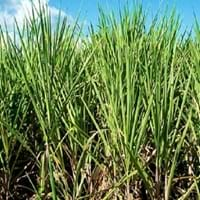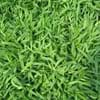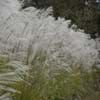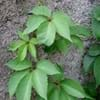Life Span
Perennial
Perennial
Type
Grass
Flowering Plants, Fruits, Trees
Origin
Southeastern Asia, Melanesia, Micronesia
Central Asia
Types
Not Available
Aceymac apple, Bailey Sweet apple, Dabinett apple, Nehou apple
Habitat
agricultural areas, Wet lands
Hillside
USDA Hardiness Zone
10-15
5-8
Sunset Zone
H1, H2, 8, 9, 20, 21, 22, 23, 24
A1, A2, A3, 8, 9, 10, 11, 12, 13, 14, 15, 16, 17, 18, 19, 20, 21, 22, 23, 24
Habit
Clump-Forming
Oval or Rounded
Flower Color
White hair and some brown spots on margins and at tips
White
Flower Color Modifier
Bicolor
Not Available
Fruit Color
Not Available
Green, Red
Leaf Color in Spring
Green
Dark Green
Leaf Color in Summer
Light Green
Green
Leaf Color in Fall
Green
Brown, Green, Light Yellow
Leaf Color in Winter
Green
Not Available
Leaf Shape
Acicular
Oblong
Plant Season
Summer, Fall
Spring
Sunlight
Full Sun
Full Sun, Partial shade
Growth Rate
Very Fast
Medium
Type of Soil
Clay, Loam, Sand
Loamy
The pH of Soil
Acidic, Neutral, Alkaline
Neutral
Soil Drainage
Average
Well drained
Bloom Time
Early Summer, Summer, Late Summer, Early Fall
Fall, Summer
Tolerances
Wet Site, Drought
Drought
Where to Plant?
Ground
Ground
How to Plant?
Seedlings, Stem Cutting
Grafting, Seedlings, Transplanting
Plant Maintenance
High
Medium
Watering Requirements
Water Deeply
Medium
In Summer
Lots of watering
Lots of watering
In Spring
Moderate
Moderate
In Winter
Average Water
Average Water
Soil pH
Acidic, Neutral, Alkaline
Neutral
Soil Type
Clay, Loam, Sand
Loamy
Soil Drainage Capacity
Average
Well drained
Sun Exposure
Full Sun
Full Sun, Partial shade
Pruning
Prune ocassionally, Remove dead branches, Remove Ferns
Prune when plant is dormant, Remove dead or diseased plant parts
Fertilizers
Equal amount of N,P,K, fertilize in growing season
All-Purpose Liquid Fertilizer
Pests and Diseases
Beetles, Fusarium root rot, Head smut
Aphids, Canker, Caterpillars, Powdery mildew, Root rot
Plant Tolerance
Heat Tolerance, Shade areas
Drought
Flower Petal Number
Single
Single
Foliage Texture
Coarse
Medium
Foliage Sheen
Matte
Matte
Attracts
Butterflies, Rats, Squirrels
Birds
Allergy
Diabetes, Sleepiness
Mouth itching, Throat itching
Aesthetic Uses
Not Used For Aesthetic Purpose
Not Used For Aesthetic Purpose
Beauty Benefits
Maintains teeth healthy, Making cosmetics
Not Available
Environmental Uses
Food for animals, Food for birds
Air purification
Medicinal Uses
Aging, Antidepressant, Aphrodisiac, Appetite enhancer, Diuretic, Fatigue, Muscle Pain, Nutrients
Cancer, constipation, Diabetes, Diarrhea, Dysentry, Fever, Heart problems, Tooth ache
Part of Plant Used
Leaf Stalks, Leaves, Stem
Fruits
Other Uses
Animal Feed, Biomass for fuel, Can be made into a herbal tea, Food for animals, Sometimes used for making wine
Used As Food, Wood is used for making furniture
Used As Indoor Plant
No
No
Used As Outdoor Plant
Yes
Yes
Garden Design
Dried Flower/Everlasting, Edible, Feature Plant, Tropical
Fruit / Fruit Tree, Shade Trees, Showy Tree
Botanical Name
SACCHARUM officinarum
Malus domestica
Common Name
Sugarcane
Apple Tree
In Hindi
गन्ना
सेब का वृक्ष
In German
Saccharum
Apfelbaum
In French
Canne à sucre
Pommier
In Spanish
Saccharum
Manzano
In Portuguese
Cana-de-açúcar
Macieira
In Polish
Saccharum
jabłoń
In Latin
Saccharum
Arbore
Phylum
Magnoliophyta
Magnoliophyta
Class
Liliopsida
Magnoliopsida
Clade
Commelinids, Monocots
Angiosperms, Eudicots, Rosids
Tribe
Andropogoneae
Not Available
Subfamily
Panicoideae
Not Available
Number of Species
Not Available
Season and Care of Sugarcane and Apple Tree
Season and care of Sugarcane and Apple Tree is important to know. While considering everything about Sugarcane and Apple Tree Care, growing season is an essential factor. Sugarcane season is Summer and Fall and Apple Tree season is Summer and Fall. The type of soil for Sugarcane is Clay, Loam, Sand and for Apple Tree is Loamy while the PH of soil for Sugarcane is Acidic, Neutral, Alkaline and for Apple Tree is Neutral.
Sugarcane and Apple Tree Physical Information
Sugarcane and Apple Tree physical information is very important for comparison. Sugarcane height is 30.00 cm and width 180.00 cm whereas Apple Tree height is 25.00 cm and width 20.00 cm. The color specification of Sugarcane and Apple Tree are as follows:
Sugarcane flower color: White hair and some brown spots on margins and at tips
Sugarcane leaf color: Green
Apple Tree flower color: White
- Apple Tree leaf color: Dark Green
Care of Sugarcane and Apple Tree
Care of Sugarcane and Apple Tree include pruning, fertilizers, watering etc. Sugarcane pruning is done Prune ocassionally, Remove dead branches and Remove Ferns and Apple Tree pruning is done Prune when plant is dormant and Remove dead or diseased plant parts. In summer Sugarcane needs Lots of watering and in winter, it needs Average Water. Whereas, in summer Apple Tree needs Lots of watering and in winter, it needs Average Water.





